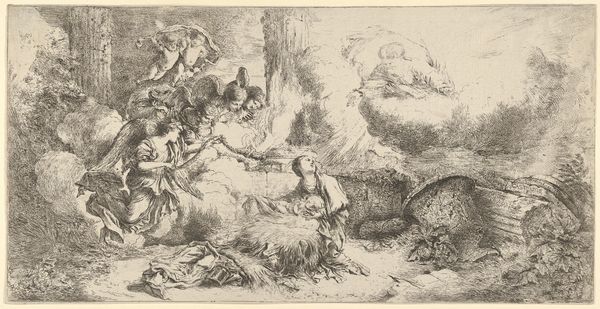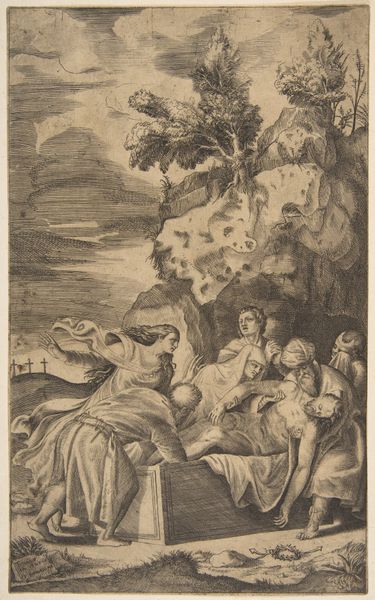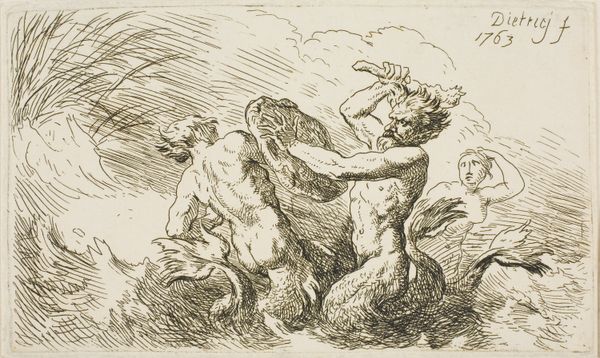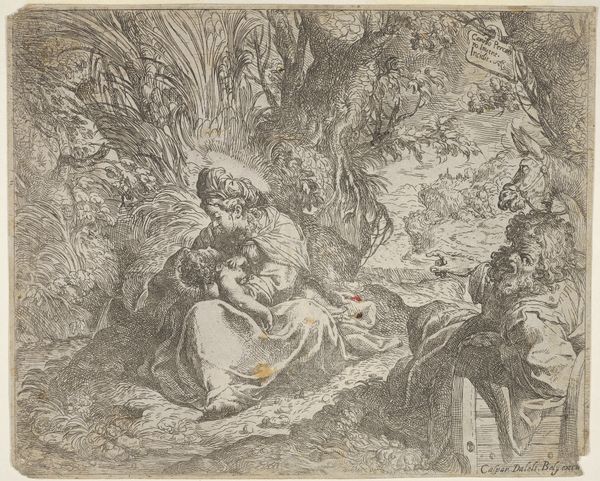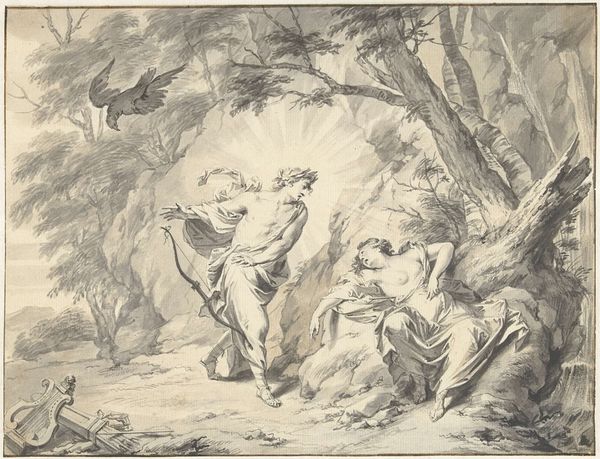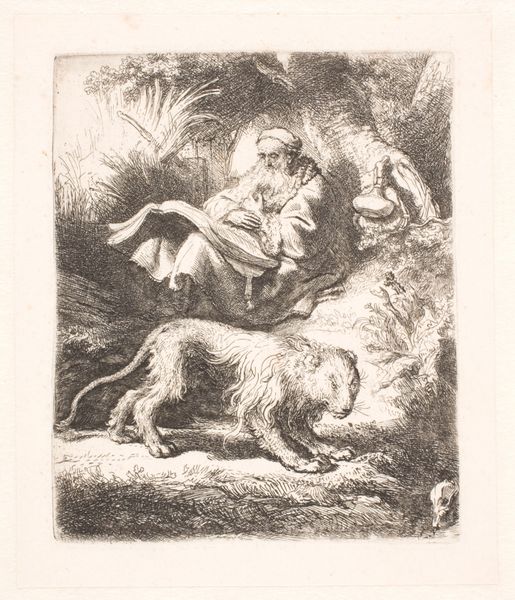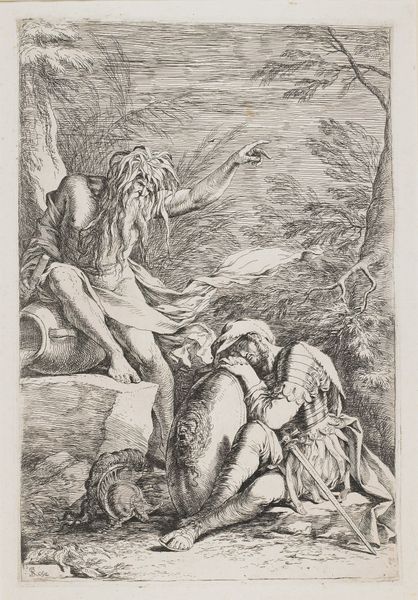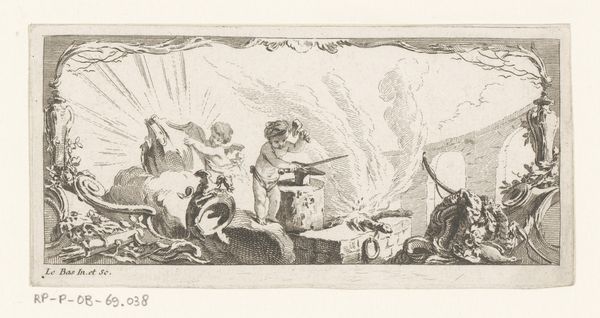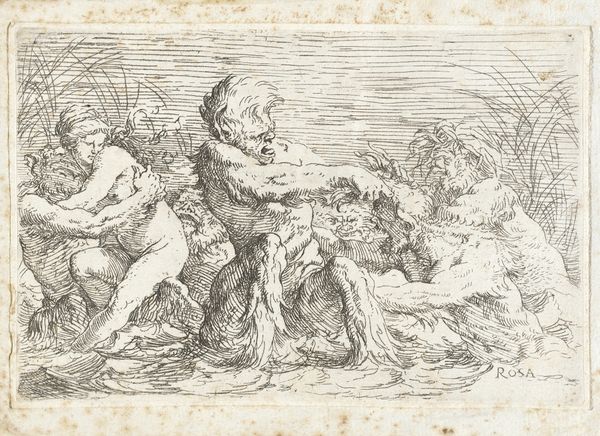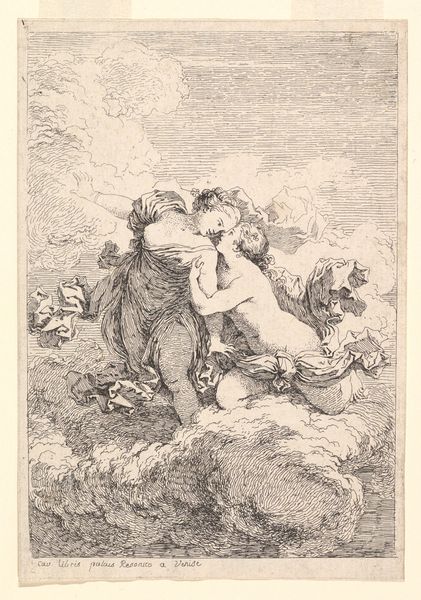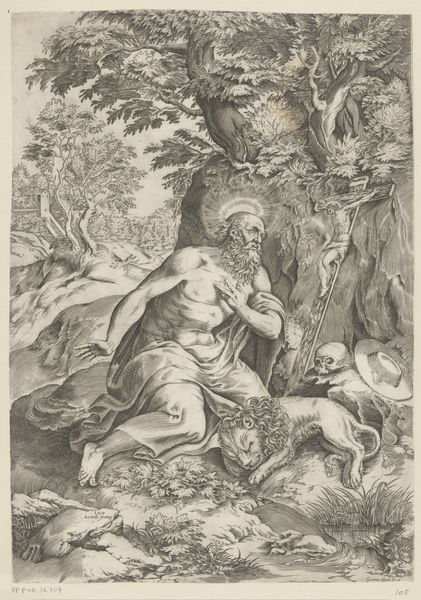
The finding of Moses who is rescued from the Nile by the maidservants of Pharaoh's daughter 1650 - 1657
0:00
0:00
drawing, print, engraving
#
drawing
#
narrative-art
#
baroque
# print
#
figuration
#
pencil drawing
#
line
#
history-painting
#
engraving
Dimensions: Sheet: 7 11/16 x 9 15/16 in. (19.6 x 25.2 cm) Plate: 7 5/16 × 9 5/16 in. (18.5 × 23.7 cm)
Copyright: Public Domain
Curator: I find myself immediately drawn to the dynamism within the composition. The gestures, the diagonal lines...it really directs my eye. Editor: That’s a perfect initial read of "The Finding of Moses," a print by Bartolomeo Biscaino, created between 1650 and 1657. The image is an engraving depicting the famous biblical scene. What materials do you suppose defined Biscaino's approach here? Curator: Clearly, the line work dominates. There's a beautiful contrast between the delicate hatching defining the figures and the looser, more suggestive marks creating the landscape. I also want to address the emotional charge. This could almost be called dramatic, despite the quiet, monochrome medium. Editor: And you see that emotion arising solely from within the image itself, not its broader context? The subject—the rescue of Moses—inherently implies themes of power, persecution, and divine intervention, surely impacting Biscaino's approach? The very production of engravings also implies circulation among an expanding reading public. Curator: Certainly, the narrative resonates, yet I would argue the artist manipulates line and form to amplify it. Look how the figures lean towards the child, guiding the viewer’s attention, using visual rhetoric in ways more immediate than, say, mere popular sentiment. The engraving almost vibrates with suspense! Editor: Well, think about where and for whom this was created. Consider the patronage system of the period and its impact on the imagery chosen and disseminated, from subject matter to line economy itself! What do you feel might the workshop culture or the printmaker's access to particular grades of metal have brought about, as to its lasting legacy? Curator: That's interesting food for thought. Editor: The history of material informs my assessment of meaning, and the symbolic and real roles played out in works. Curator: And while I do not disregard the making process or the hands that labored over this plate, I champion the intrinsic qualities as signposts for interpreting its eternal, affecting drama.
Comments
No comments
Be the first to comment and join the conversation on the ultimate creative platform.
